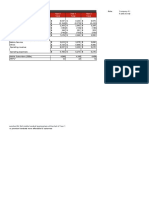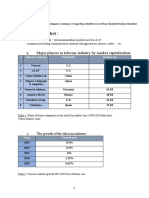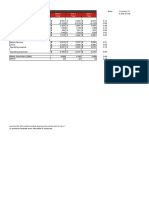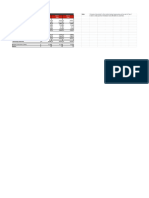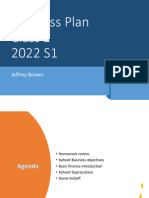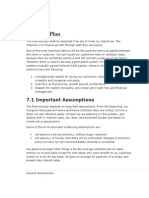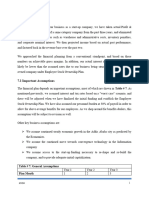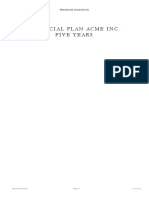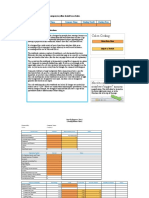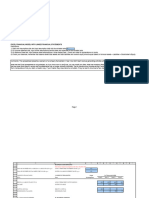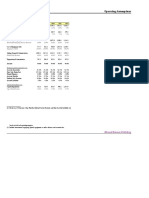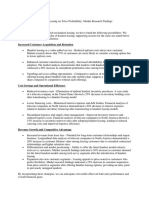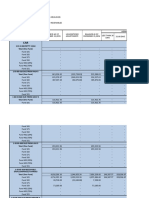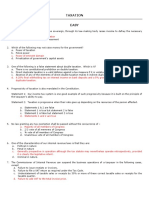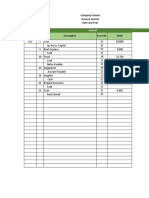To analyze the impact of leasing handsets on the financial performance of Company X, we need to compare the financial state
Assumptions:
We assume that the implementation of the handset leasing has not affected the number of mobile subscribers and the averag
We assume that the implementation of handset leasing has increased the operating revenue by 10%. Therefore, the total ope
We assume that the implementation of the handset leasing has increased the operating expenses by 5%. Therefore, the total
With these assumptions, we can calculate the financial forecast for Company X using the following metrics:
1. Operating revenue: This is the total revenue generated by the company from its operations, including mobile service and ot
2. Operating expenses: These are the total expenses incurred by the company in its operations, including the cost of goods sol
3. EBITDA: This is a measure of the company's operating profitability, calculated as earnings before interest, taxes, depreciatio
4. Net finance expense: This is the interest expense incurred by the company on its borrowings, minus any interest income ear
5. Taxation: This is the income tax expense incurred by the company on its profits.
6. Depreciation & amortization: This is the non-cash expense incurred by the company on its fixed assets and intangible assets
7. Net profit: This is the profit generated by the company after deducting all expenses from its revenue
Based on the assumptions and the available data, we can construct the following financial forecast for Company X:
Company X Financial Statement (handset leasing implemented)
S$ Million Year 0 Year 1 Year 2
Total Total Total
Income Statement
Operating $ $ $ -
Operating $ (1 $ $ -
EBITDA $ $ $ -
Net financ $ (27)
Taxation $ (45)
Depreciati $ (294)
Net profit $ $ $ -
Operating Revenue & Expenses Composition
Mobile Ser $ 1.354
Others $ 1.008
Operating $ $ $ -
Operating $ $ $ -
Mobile Subs 2,341
ARPU* 48 #DIV/0! #DIV/0!
From the financial forecast, we can see that the implementation of the handset leasing has increased the operating revenue, o
To further analyze the impact of handset leasing on Company X's financial performance, it would be useful to look at some ad
1. Gross margin: This metric measures the profitability of the company's products or services. By calculating the difference bet
2. Customer retention rate: One of the goals of the handset leasing program may be to increase customer loyalty and reduce c
3. Average revenue per user (ARPU): This metric measures the average revenue generated by each customer. By comparing th
4. Cash flow: Cash flow is an important metric for any business, as it shows the company's ability to generate cash from its ope
�5. Market share: Another goal of the leasing program may be to increase the company's market share in the industry. By analy
By analyzing these metrics and data, we can gain a more comprehensive understanding of the impact of the handset leasing p
�to compare the financial statements of the company before and after the implementation of handset leasing. However, we don't have the
bile subscribers and the average revenue per user (ARPU) of the mobile service. Therefore, we will use the same values for Year 0, Year 1, a
10%. Therefore, the total operating revenue for Year 1 and Year 2 will be 10% higher than for Year 0.
es by 5%. Therefore, the total operating expenses for Year 1 and Year 2 will be 5% higher than Year 0.
ncluding mobile service and other sources.
ncluding the cost of goods sold, salaries, marketing expenses, and other operating expenses.
ore interest, taxes, depreciation, and amortization.
minus any interest income earned on its investments.
ed assets and intangible assets.
ast for Company X:
eased the operating revenue, operating expenses, and EBITDA of Company X. The net profit has also increased, although it is important to
d be useful to look at some additional financial metrics and data. Here are a few suggestions:
y calculating the difference between the revenue and the cost of goods sold (COGS), the gross margin can provide insight into how much p
customer loyalty and reduce churn. By measuring the percentage of customers who continue to use the company's services after a certain
ach customer. By comparing the ARPU before and after the implementation of the leasing program, we can determine if the program has h
y to generate cash from its operations. By looking at the company's cash flow statement, we can see if the implementation of the leasing p
� share in the industry. By analyzing the company's market share data before and after the implementation of the program, we can determ
mpact of the handset leasing program on Company X's financial performance.
� g. However, we don't have the financial statements of Company X before the implementation of the handset leasing, so we will need to m
ame values for Year 0, Year 1, and Year 2.
ed, although it is important to note that the increase in net profit may not be solely due to the implementation of the handset leasing, as o
ovide insight into how much profit the company is generating from each sale. By comparing the gross margin before and after the implem
mpany's services after a certain period, we can see if the leasing program has had an impact on customer retention.
determine if the program has had a positive or negative impact on revenue per customer.
mplementation of the leasing program has had an impact on the company's ability to generate cash.
�f the program, we can determine if the program has had an impact on the company's position in the market.
�t leasing, so we will need to make some assumptions.
on of the handset leasing, as other factors may have contributed to the increase.
n before and after the implementation of the handset leasing, we can determine if the leasing program has positively or negatively impact
�positively or negatively impacted the company's profitability.





